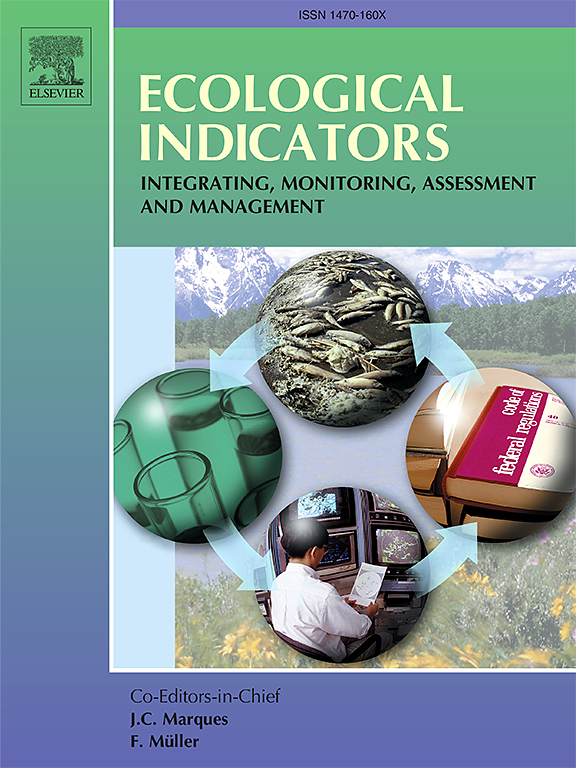将生态指标纳入经济金融决策管理
IF 7
2区 环境科学与生态学
Q1 ENVIRONMENTAL SCIENCES
引用次数: 0
摘要
生态可持续性与财务决策之间的脱节仍然是管理环境恢复工作的持续挑战。本研究旨在通过将生态指标整合到经济和金融管理框架中,评估生态恢复财政援助如何有助于改善草地植被覆盖度(一个重要的生态指标)。本研究利用2005 - 2020年中国54个从事畜牧业和半农业生产的县(不包括内蒙古)的面板数据,在控制相关自然因素的情况下,采用双向固定效应和交叉固定效应模型。实证结果表明:(1)财政援助与植被覆盖度之间存在显著的非线性关系;(2)由于不同的环境基线,财政援助的生态影响存在区域差异;(3)财政分权越均衡,生态效果越好;(4)地方政府效能显著中介财政支持的影响;(5)财政支出结构错配会降低生态回报。这些发现表明,将生态指标纳入财政规划和增强地方治理能力对于改善修复项目的成本效益和环境影响至关重要。本文章由计算机程序翻译,如有差异,请以英文原文为准。
Integrating ecological indicators into economic and financial decision-making management
The disconnection between ecological sustainability and financial decision-making remains a persistent challenge in managing environmental restoration efforts. This study aims to evaluate how financial assistance for ecological restoration contributes to improvements in grassland vegetation coverage—an essential ecological indicator—by integrating ecological metrics into economic and financial management frameworks. Using panel data spanning from 2005 to 2020 across 54 counties in China that engage in animal husbandry and semi-agricultural practices (excluding Inner Mongolia), the study employs bidirectional fixed-effects and cross-fixed-effects models while controlling for relevant natural factors. Empirical results reveal: (1) a significant but nonlinear relationship between fiscal assistance and vegetation coverage; (2) regional variation in the ecological impact of financial assistance due to differing environmental baselines; (3) stronger ecological outcomes where fiscal decentralization is more balanced; (4) local government effectiveness significantly mediates the impact of financial support; and (5) mismatches in fiscal spending structures can reduce ecological returns. These findings suggest that embedding ecological indicators into fiscal planning and enhancing local governance capacities are vital for improving the cost-effectiveness and environmental impact of restoration programs.
求助全文
通过发布文献求助,成功后即可免费获取论文全文。
去求助
来源期刊

Ecological Indicators
环境科学-环境科学
CiteScore
11.80
自引率
8.70%
发文量
1163
审稿时长
78 days
期刊介绍:
The ultimate aim of Ecological Indicators is to integrate the monitoring and assessment of ecological and environmental indicators with management practices. The journal provides a forum for the discussion of the applied scientific development and review of traditional indicator approaches as well as for theoretical, modelling and quantitative applications such as index development. Research into the following areas will be published.
• All aspects of ecological and environmental indicators and indices.
• New indicators, and new approaches and methods for indicator development, testing and use.
• Development and modelling of indices, e.g. application of indicator suites across multiple scales and resources.
• Analysis and research of resource, system- and scale-specific indicators.
• Methods for integration of social and other valuation metrics for the production of scientifically rigorous and politically-relevant assessments using indicator-based monitoring and assessment programs.
• How research indicators can be transformed into direct application for management purposes.
• Broader assessment objectives and methods, e.g. biodiversity, biological integrity, and sustainability, through the use of indicators.
• Resource-specific indicators such as landscape, agroecosystems, forests, wetlands, etc.
 求助内容:
求助内容: 应助结果提醒方式:
应助结果提醒方式:


